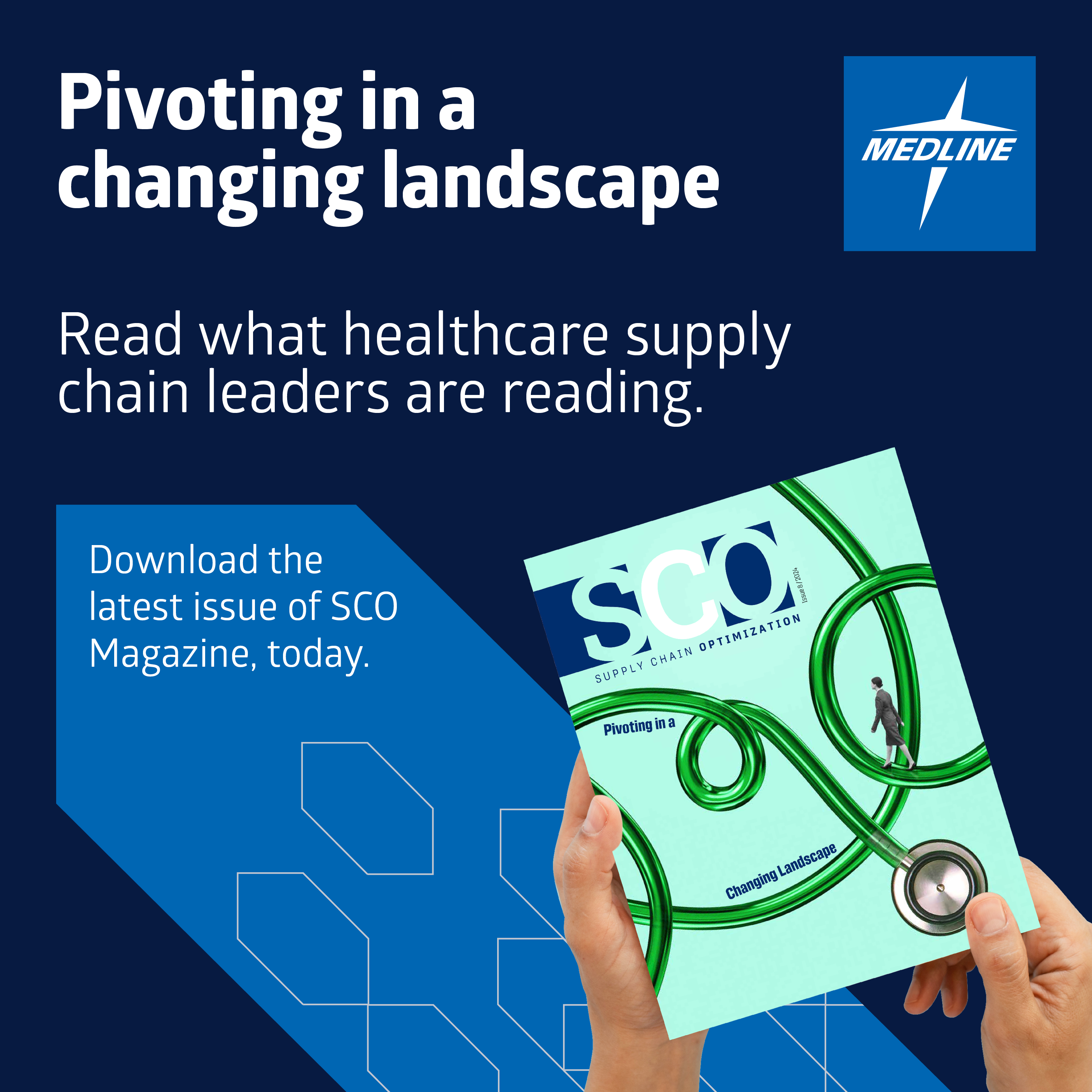Encouraging, supporting and elevating the role of infection preventionists

By Medline Newsroom Staff | March 8, 2023
The pandemic took a significant toll on infection preventionists (IPs) – the “specially trained professionals, leaders, educators and collaborators” who work on the frontlines of healthcare to reduce and eliminate healthcare-associated infections (HAIs) and “promote a culture of safety,” according to the Association for Professionals in Infection Control and Epidemiology (APIC).
During the pandemic, IPs had to manage rapidly changing prevention guidance, shortages in personal protective equipment (PPE), and increases in HAIs and workload. In a recently published survey of 6,000 APIC members, only 17% reported high life quality, while 21.5% reported depression; 29.8%, anxiety; and 65%, burnout due to COVID-19. Infection preventionists working nine or more hours a day were more likely to report a decline in physical and mental health. The same study found a 25% vacancy rate for IPs, and 40% of current IPs expecting to retire in the next decade.
Given these statistics, how can providers and educators encourage current and future healthcare professionals to consider a career as an IP? The Medline Newsroom spoke with Medline Medical Science Liaison Caryn Arnold, MBA, RN, CNOR(E), a-IPC , on how providers and provider partners can help prioritize and support this vital role.
- Medline Newsroom: Why are infection preventionists so important in healthcare?
- Caryn Arnold: The entire focus of the IP is to prevent the spread of HAIs; not only preventing patients or residents who don’t have an infection from acquiring an infection, but also those who do have an infection from spreading it to others or becoming more ill themselves. As a clinical discipline, IPs ensure that infection prevention protocols are understood, adhered to and documented. The role also includes working with nonclinical staff, such as those in environmental services (EVS), dietary and laundry; all important in the function of the hospital or long term care environment and ensuring that proper practice and protocols are in place and followed to prevent the spread of infection.
70%
of surveyed infection preventionists said they spend 50% or less of their time on HAI-related activities.
- Medline Newsroom: How did the pandemic impact IPs?
- Caryn Arnold: For IPs, the pandemic was exhausting, not just physically but intellectually and morally. It was unrelenting and continues to impact the profession. Many nurses will work themselves to a point where they can no longer function. It’s a feature of being a nurse. And nurses with infection prevention responsibilities don’t have the privilege of leaving their work at work at the end of a shift. As the pandemic continued, a lot of the IPs woke up and said: “Wait a minute. I cannot continue to work 12 hours a day and carry a pager.” And that’s a lot of the issue. You may only have one person for the entire hospital or long-term care organization. There’s no one who can back you up. You are on call all the time.
- Also alarming, is that nearly nearly 70% of IPs surveyed in a 2020 APIC “megasurvey” said they spent 50% or less of their time on HAI-related activities – their primary role.Fortunately, one benefit of the pandemic is that the role of the infection preventionist is no longer an invisible job. In fact, the pandemic and the importance of infection prevention in the healthcare setting has never been more important. When I started as a hospital nurse, the feeling was that the infection preventionist role easily could be added to that of a full-time nurse or other hospital professional. Where I worked, the employee health nurse was also the IP.Today, IPs have gained increased credibility and an appropriate seat at the table on quality, value analysis and clinical practice committees. They may have a director title, and a salary that reflects a leadership position. They may even have final say or veto ability in some purchasing and other major clinical decisions.
- Medline Newsroom: How can providers support and encourage the role of IPs?
- Caryn Arnold: The recent APIC survey confirms that IPs working shorter shifts, with “more organizational wellness support,” report better well-being which translates to safer and higher quality healthcare. In addition, incentivizing the IP role with higher pay and a more prestigious title can help ensure interest and retention. Acute care facilities are making more progress in these areas.
- If a hospital or healthcare facility does not have a dedicated full time IP, that position should be created. I recently heard a wise Infection Preventionist say that IPs are an investment, not an expense. This is especially challenging in the post-acute care setting, as these roles often are added to the responsibilities of another member of the staff. Long-term care centers operate close to their budgets. Creating a full-time equivalent (FTE) IP role is a huge start in prioritizing and supporting infection prevention. On the acute care side, there is more likely to be a director or leadership title associated with the IP role. For hospitals with fewer beds, adding a part-time IP can help ease the burden of the full-time IP so they don’t have to carry the pager all of the time. More recently, APIC has recommended that acute and long-term care facilities reach out to the recently retired IP community. There may be a retired nurse who is willing to come in to review lab results, input infection data, carry the pager, and take on other responsibilities to reduce the burden on the primary IP.
“Today, IPs have gained increased credibility and an appropriate seat at the table on quality, value analysis and clinical practice committees.”

Caryn Arnold, MBA, RN, CNOR(E), a-IPC
Medline Medical Science Liaison
- Medline Newsroom: Does an IP need to be a nurse?
- Caryn Arnold: An IP doesn’t necessarily have to be a nurse, although some of the fundamentals of infection prevention may come more easily to nurses because of their training. I’ve worked with IPs who have degrees and backgrounds in lab technology, biological sciences, physical therapy and/or a master’s in public health. People from non-nursing programs may need training, or to do rotations in the nursing care unit to better understand how nursing and infection prevention interact. However, that doesn’t mean they can’t be very effective in their roles; it’s just a matter of adding that training to their program or onboarding. There is a certificate in infection control (CIC), and an associate certificate in infection control (a-IPC), an entry level to CIC. There also is certification for the IP in long-term care (LTC-CIP). Often, an IP is hired with the expectation that they will achieve the CIC or LTC-CIP certification. Because of staff shortages and budget considerations in long term care, leadership may appoint an employee, often an assistant director of nursing (ADON) or a wound care nurse within the organization, to take on the IP role. However, that individual may neither understand nor have interest in the IP role; characteristics that are important for optimal infection prevention success.
- In terms of recruiting and encouraging the role of IPs, it’s important to get creative and to promote the role in nursing and other undergraduate and graduate programs. The pandemic has increased the public’s awareness infection prevention, and this newly elevated and well compensated role may be of interest to younger nurses and other healthcare professionals.
- Medline Newsroom: How does Medline support infection preventionists?
- Caryn Arnold: Medline offers a broad range of products, solutions and training that support Infection Prevention. These include clinical assessments and best practice guidance, education and training, and products that help you standardize and streamline protocols and prevent HAIs, including central line dressing kits, Total One Layer Catheter Trays, and external urinary catheters and the Long-Term Care Solution for infection prevention. In addition, Medline University offers a wide range of continuing education and “micro-learning” courses on pathogens, and infection prevention standards, practice and care.
Read the related article, “The infection preventionist role is evolving: 10 ways you can lead the way.”
Learn more about Medline University clinical education, onboarding and other education courses
Medline Newsroom Staff
Medline Newsroom Staff
Medline's newsroom staff researches and reports on the latest news and trends in healthcare.

